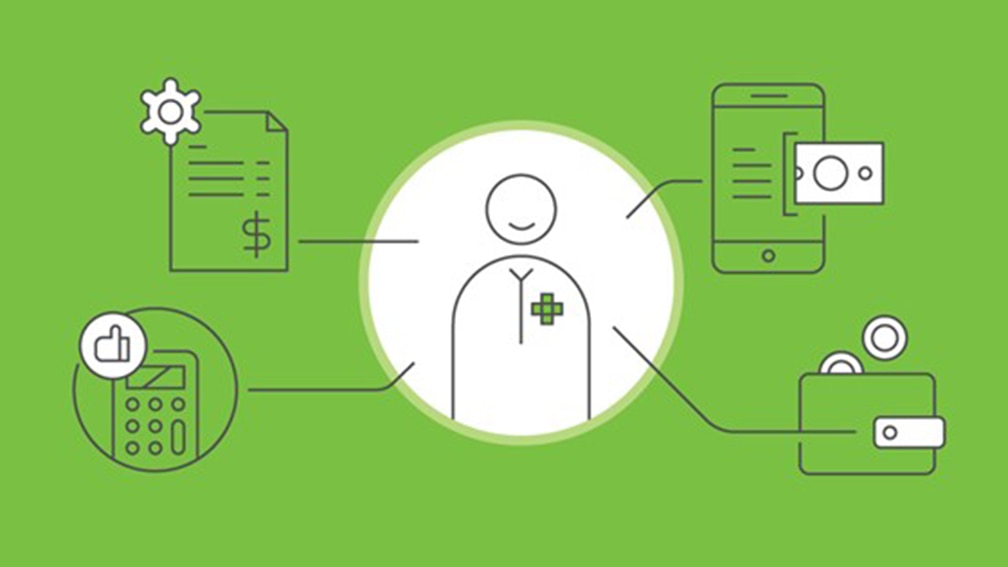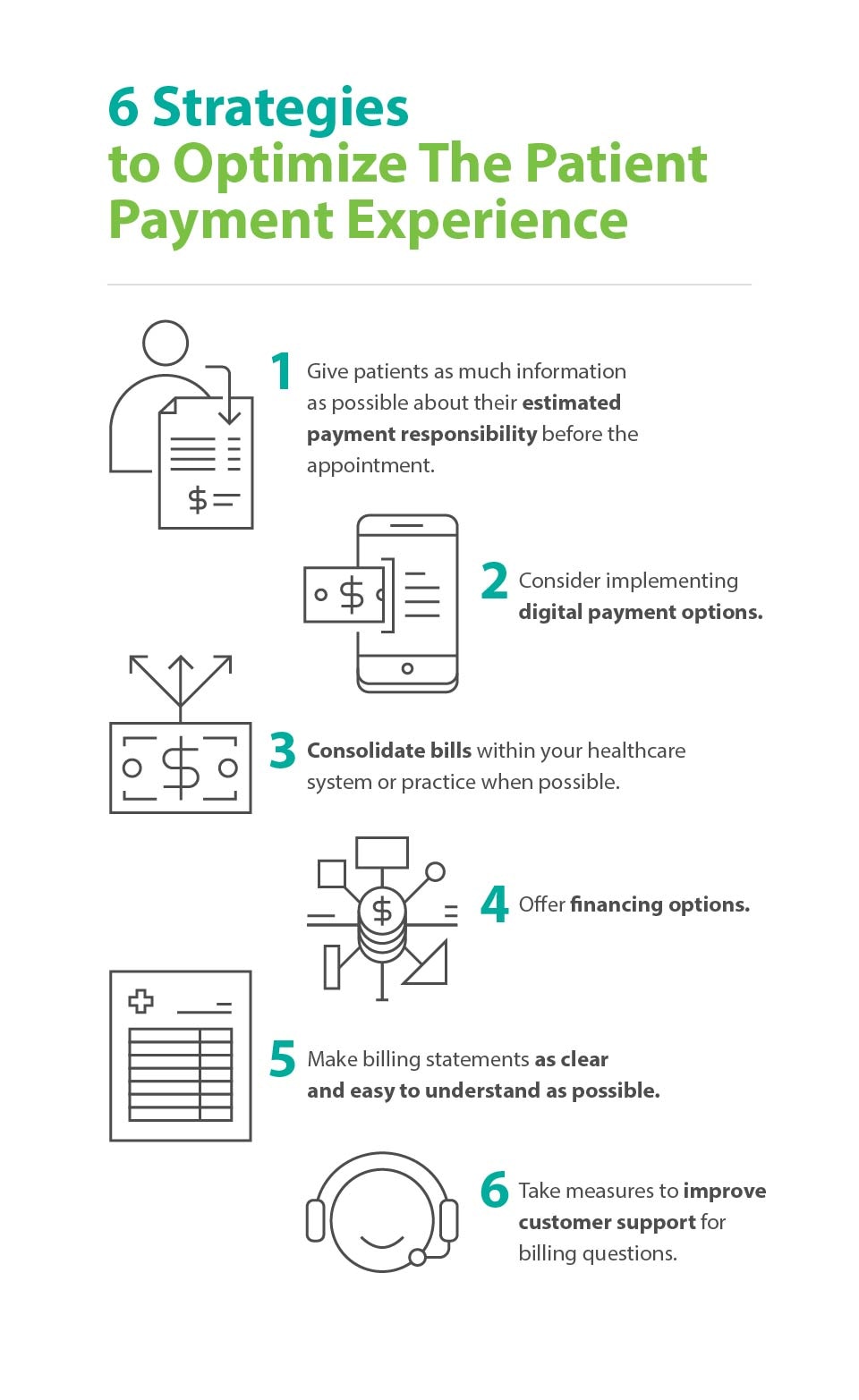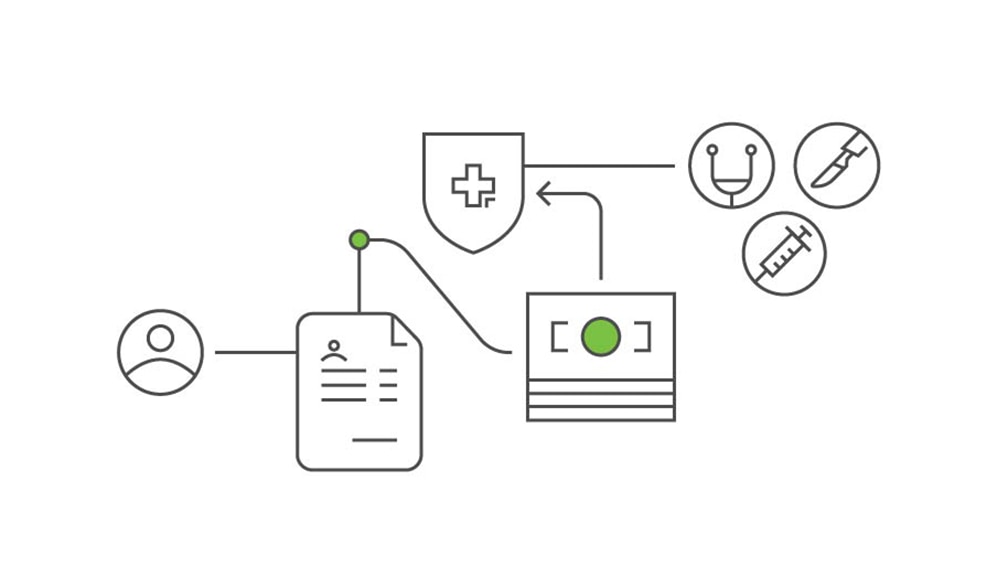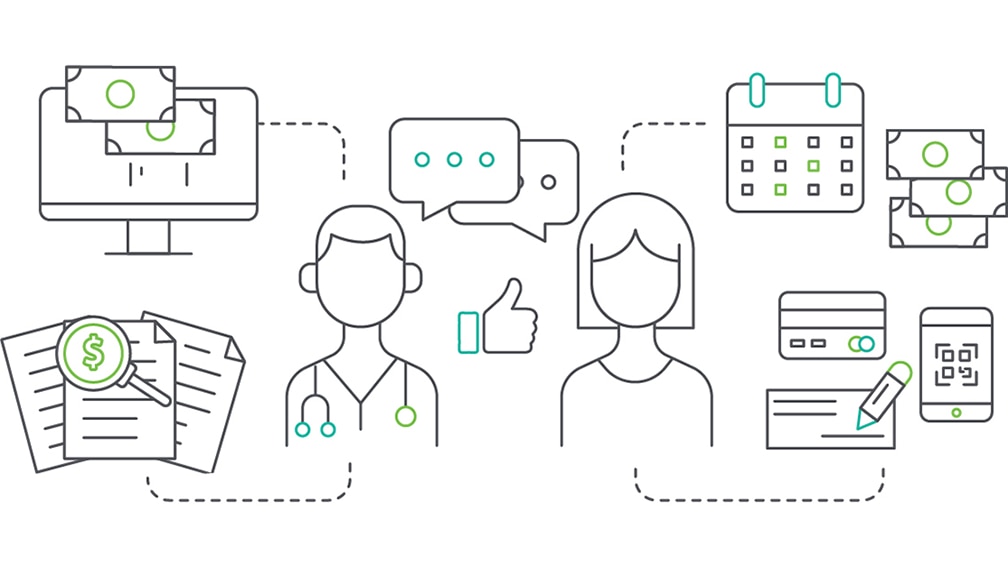How to optimize your patient payment experience to help improve patient loyalty
The payment experience impacts patient loyalty. This article will examine the connection and offer strategies to improve the payment experience to help enhance patient retention.
By Lisa Eramo
Posted Jun 16, 2023 - 5 min read





Many patients today are tech-savvy and want easy patient payment options. Health systems and providers that offer modern patient payment solutions may do better when it comes to a critical component of long-term success: patient retention.
Your patients aren’t only looking for the ability to make payments online. They may also want ongoing support when questions arise, easy-to-understand medical bills, and the option for flexible financing. Offering these patient payment services can help you put your customers front and center.
This article addresses why the patient payment experience can impact patient retention and loyalty and how health systems and providers can adopt patient payment solutions to help improve patient satisfaction and increase patient payments.

How the Patient Payment Experience Impacts Patient Retention
The patient experience isn’t only about the clinical side of things. Of course, achieving desired clinical outcomes and having positive interactions with physicians and clinical employees are important. However, healthcare cost transparency and updated patient payment options can also be crucial. Fast and easy payment options are an important part of the overall healthcare experience for 57 percent of patients, according to a PYMNTS survey. Nearly two-thirds (63 percent) of patients would switch doctors based on a negative payment experience, the survey found.
What exactly do patients want?
They likely desire the same things they want anytime they make a big purchase: to know how much the item or service costs and whether they can manage that cost with convenient monthly payments if needed.
According to the PYMNTS.com survey, 38 percent of patients would consider switching healthcare providers if they didn’t receive a cost estimate beforehand. This result may not be surprising. It makes sense that patients would want to shop around for the highest quality, most affordable care to make an informed, cost-conscious decision.
Patients may also want an easy-to-understand medical bill with clear instructions on how to pay. More than a third (36 percent) would consider switching if the billing process was complex, the PYMNTS.com survey found.
Finally, many patients want the ability to prioritize their care without worrying about their finances. More than a quarter (27 percent) of patients would consider switching providers if they weren’t offered a payment plan or third-party financing.
Unfortunately, when it comes to updated payment solutions, many patients feel that healthcare systems and providers have lagged. Four in 10 (40 percent) Americans said they weren’t satisfied with the billing experience in Cedar’s 2021 Healthcare Consumer Experience Study.
The good news? Health systems and providers have already taken steps to focus on patient payment optimization. Providing patient payment options is one clear way to improve patient satisfaction and enhance patient retention.

Strategies to Optimize the Patient Payment Experience
How can you improve patient retention through patient payment optimization? Consider these six strategies:
1. Give patients as much information as possible about their estimated payment responsibility before the appointment.
Almost a third (32 percent) of patients in Cedar’s survey wanted a better understanding of what they owed before a procedure. In some cases, the No Surprises Act requires health systems and providers to give a good faith estimate.
2. Consider implementing digital payment options.
More than half (56 percent) of patients in Cedar’s survey wanted digital payment options, which may include access to a seamless financing experience online via a mobile app, an in-office device, or by phone. The good news? When you let patients pay online, they may be able to reduce administrative costs and get payments faster while simultaneously improving the patient payment experience. In the Cedar survey, 79 percent of people said they’d be willing to pay for out-of-pocket costs before or at the visit if they were offered a guaranteed price.
3. Consolidate bills within your healthcare system or practice when possible.
Many patients don’t want to receive a hospital bill one day and a bill for their doctor’s services the next. It’s easier for patients to understand the total cost of healthcare services when the charges are all in one place. Health systems and providers using consolidated billing may even experience improved patient collections. Consolidated bills may help empower patients with information so they can more easily manage their finances. In the Cedar survey, more than 90 percent of people said the quality of the billing and payment experience — including consolidated bills that match the health plan’s benefits as well as clear payment options — was an important factor in whether they’d return to a healthcare system or provider.
4. Offer financing options.
Consider offering online patient payments and flexible financing options that help patients manage the cost of care with convenient monthly payments. With ever-rising healthcare costs, your patients may need patient payment solutions that enable them to pay gradually over time, so cost doesn’t become a barrier to getting the services they need.
5. Make billing statements as clear and easy to understand as possible.
Patients may be more likely to pay promptly if it’s easy to understand their bills. Not sure where to start improving your billing statements? Consider asking your back-office employees these questions.
- What kinds of questions do patients ask most frequently?
- What confuses patients?
Then, you can reflect on your employees’ feedback to improve the clarity of your billing statements.
It’s usually a good idea to include these elements on billing statements.
- The physician’s name
- The name of the health system or provider
- The services rendered (It’s best to use plain language. A patient will likely understand knee replacement better than ‘knee arthroplasty.’)
- The date of service
- The amount the insurance paid
- The amount due from the patient
- Payment options
It may also be helpful to use a variety of fonts, colors, and other section headers to make important information stand out. Finally, if possible, send patient statements immediately upon receipt of the explanation of benefits from the insurance company. Patients may be more likely to pay when they receive a prompt bill because the services they received are still fresh in their minds.
6. Take measures to improve customer support for billing questions.
You can provide an excellent level of support by leveraging healthcare technology that automates certain workflows. Alternatively, outsourcing billing support may help you offer extended hours for patients who work during the day and find it difficult to call and ask questions during regular business hours. Some health systems and providers are also using artificial intelligence (chatbots) to answer frequently asked questions, handle insurance questions, and address payment-related inquiries. Patients can engage with chatbots 24/7 which could help improve patient satisfaction and enhance patient retention.

Conclusion
High-quality clinical services are an important element for building patient loyalty and trust. In addition, you may want to invest in creating a stellar patient payment experience — one that puts patients’ financial needs front and center.
To help enhance patient retention, health systems and providers should prioritize both the physical and financial health of their patients. They can help reduce cost concerns that can sometimes be a barrier to care. Moreover, they can give patients much-needed options to pay for the care they need in ways that help them manage their monthly budget. Patient retention can come naturally when you send a strong message: Our patients matter to us. We know healthcare can be expensive, and we want to help.
About the Author

Lisa A. Eramo
Lisa A. Eramo is a freelance healthcare writer with more than a decade of experience writing for healthcare executives, managers, physicians, and consumers. She contributes to various trade publications and also assists clients with healthcare content marketing efforts. Learn more at www.lisaeramo.com.

This content is subject to change without notice and offered for informational use only. You are urged to consult with your individual business, financial, legal, tax and/or other advisors and/or medical providers with respect to any information presented. Synchrony and any of its affiliates, including CareCredit, (collectively, “Synchrony”) makes no representations or warranties regarding this content and accept no liability for any loss or harm arising from the use of the information provided. Your receipt of this material constitutes your acceptance of these terms and conditions.






